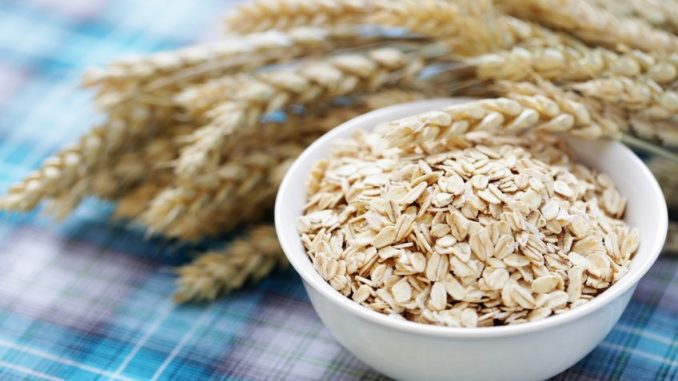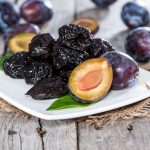
Oats are extremely healthy for us. A number of benefits have been demonstrated for the consumption of oats. They are a versatile ingredient. Oats make excellent bars, cookies, baked products, breakfast cereals etc. because of their texture, bland flavour and of course all those health benefits.
Can everyone eat oats?
It may seem odd to start such a post by saying who cannot eat them given they have such potent health benefits but it is important from the outset to confirm that only a few people are not able to eat them without suffering issues. The Coeliac UK web-site has excellent advice on this matter.
Most coeliacs can tolerate gluten-free oats because they contain a protein called avenin. Only those coeliacs with an extreme gluten-sensitivity should avoid oats. One of the biggest issues is cross-contamination of production lines that also handle rye, wheat and barley because trace amounts of gluten can enter the oat processing feed stream.
Oats have been added to the diet to help manage various clinical conditions including weight management, a reduction in blood sugar levels and to reduce the pervasive risk of cardiovascular (heart) disease. We often enjoy them as porridge or as muesli and granola.
The oat grain (Avena sativa L.) is often known as a groat. It is the intact and whole form and usually takes a significant time to cook. To make oats more palatable, they have to be processed. They can take the form of crushed or rolled oats, or what are known as steel-cut oats. Instant or quick oats are the most processed form. They do not take long to cook although for some the texture and quality can be too mushy.
Oats in porridge are often eaten as oatmeal. This is produced by boiling the grain in water or milk to make a porridge.
The Nutritional Content Of Oats
Oats are a good source of fibre and carbohydrate and are very nutrient dense. The main carbohydrate is starch but also includes beta-glucan. Beta-glucan is a soluble fibre and has a number of health benefits associated with it in its own right.
The grain also contains protein and fat. The fat content is one of the highest of all the grains. A half cup (78 grams) of dry oats calculated from the USDA database shows the grains contain the following vitamins and minerals:-
- Folate: 11% of the RDI
- Vitamin B1 (thiamin): 39% of the RDI
- Vitamin B5 (pantothenic acid): 10% of the RDI
- Manganese: 191% of the RDI
- Phosphorus: 41% of the RDI
- Magnesium: 34% of the RDI
- Copper: 24% of the RDI
- Iron: 20% of the RDI
- Zinc: 20% of the RDI
The key mineral in this table are magnesium which is needed for enzyme activity and functioning. Eating magnesium rich foods is claimed to reduce the risk of developing type-2 diabetes.
The proteins include avenins which have functional properties similar to gliadins in wheat. Whilst most coeliacs are not likely to be affected, these particular proteins can trigger coeliac disease. There is often an issue with contamination of oats with other grains too such as wheat and barley which are gluten-containing and very often present issues for those attempting to lead a gluten-free lifestyle.
The Oat Bran
The fibre content includes the oat bran which is an insoluble fibre. This is the outer casing of the seed and is obtained when the groat is milled into flour. This fibre is claimed to be so robust that the seed can pass without being digested through a human gut because of its protective effect.
Consuming bran over a number of weeks can significantly lower total cholesterol and low density lipoprotein cholesterol (LDL-cholesterol). Dietary fibre is a key dietary consideration for everyone because of the impact it has on good intestinal health including firmer stools for example. The implication however from consuming just the bran is that we only have heart-health benefits but there is much more which we discuss in a moment.
The oat bran is actually the course fraction when oats are milled to produce flour. The fine fraction has a very high starch content which in itself has unique properties. The coarse fraction comes from the outer aleurone and subaleurone layers of the groat. It is collected when the milled flour is sieved. The American Association of Cereal Chemists and the US Food and Drug Administration have stated that oat bran must contain at least 16% total dietary fibre with a third of this being soluble and have a beta-glucan content of at least 5.5%w/w.
The Beta-Glucans In Oats
The key soluble fibre is beta-glucan which slows absorption of carbohydrates in food by the blood. This effect helps reduce the spiking that occurs in blood sugar levels following a meal. It also reduce the production of insulin which leads to production and storage of fat. Likewise, this fibre too is extremely helpful in reducing the risk of type-2 diabetes and is often touted as a useful ingredient for diabetics managing blood sugar levels.
The oat starch also appears to have some special nutritional properties. It contains between 25 and 30% w/w of amylases which are enzymes that help with starch breakdown.
The Antioxidants
The whole oat contains lots of antioxidants which are polyphenols. The key ones are the avenanthramides which are only found in this grain. The avenanthramides have both potent anti-inflammatory benefits but also reduce itching because they are often added to lotions.
Oat Based Products
Oats are found in a variety of products such as bars, as oat milk, biscuits and other processed foods. Each has its own benefit.
Please note this article contains links to our affiliate marketing partners. Please read our affiliate disclosure.


Leave a Reply